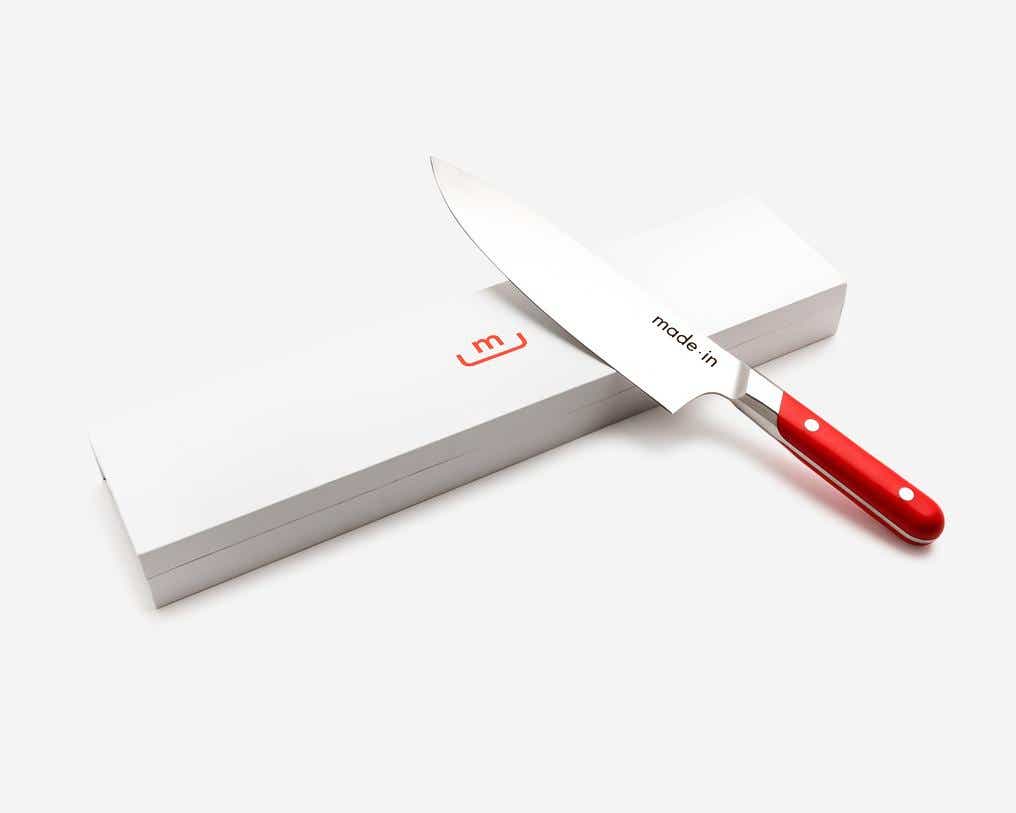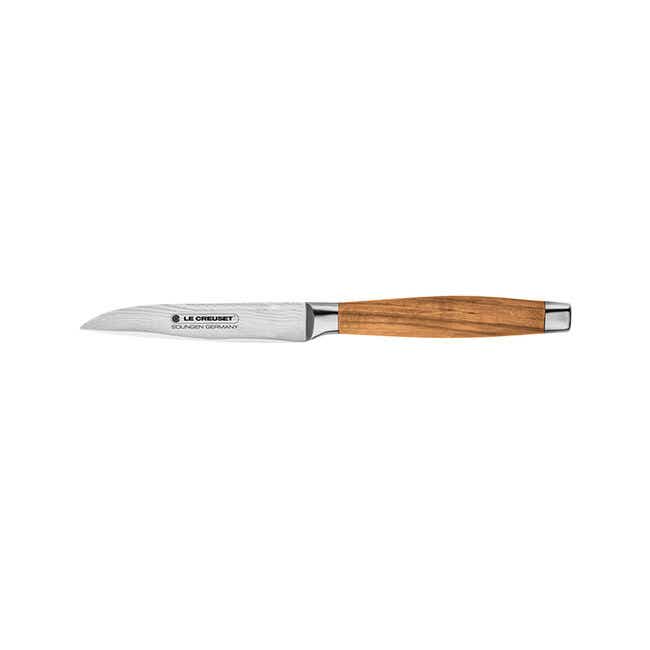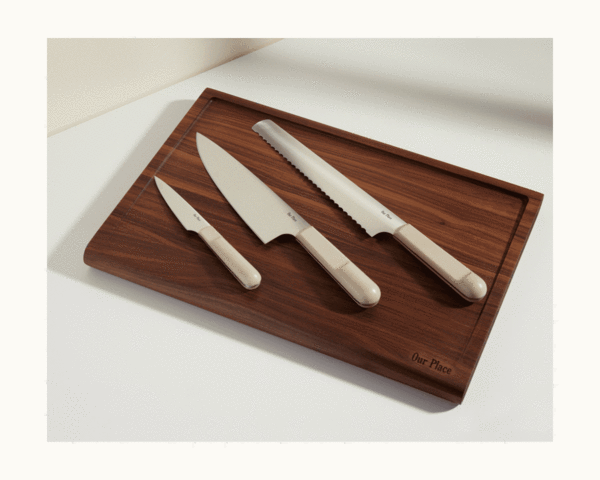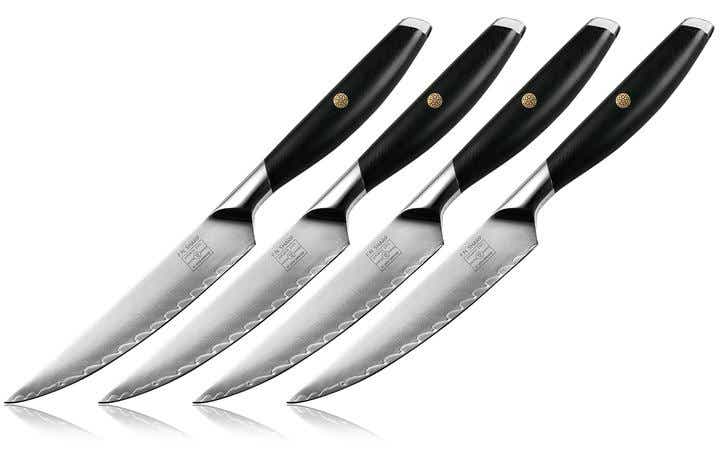The first time I recognized the importance of cooking with good knives I was in my 20s, and living in a small apartment in New York. My mother had just flown in from Los Angeles to visit, and stowed away in her suitcase was one single chef’s knife still in its pristine white sleeve. I blinked heavy blinks when she showed it to me, surprised that she somehow got the knife through the X-ray machines, and that she felt like this was just the right housewarming gift. An upgrade from the roll of Costco trash bags she used to bring me in college, I suppose, but a huge knife nonetheless.
“You know they sell knives in New York,” I said, emphasizing the word sell just to annoy her. She rolled her eyes. Because she knew that whatever knives Manhattan was selling, I was buying the cheapest of them. That evening she proved the knife’s worth while preparing dinner. (And I obviously kept it.)
I’m older now, with an impressive knife set proudly perched atop my kitchen counter, sandwiched between my Cuisinart mixer and potted plants. But it was only after my own battle slicing roast beef crosswise that I finally invested in better blades. Finding quality knives has been transformative for me as a blossoming chef. It forced me to educate myself on knife anatomy, play around with grip, and find the confidence to tackle dishes appropriately. Now when I look at a recipe I get excited to do the prep work and ponder which knife I’ll use.
Start over in the kitchen with these top-performing restaurant-quality knives:
Best Knife for Home Chefs
Think about the chef’s knife as your basic white T-shirt; it’s the most important item you’ll have in the closet knife block. If you’re ready for a piercingly sharp everyday knife, this DTC Made in Cookware 8-inch Japanese santoku knife will become your prized blade. Hammered from one single rod of nitrogen-treated stainless steel, you’ll soon realize why chefs prefer a continuous piece of metal when slicing and chopping (hint: it’s much sturdier). This chef’s knife also has a NITRO+ hardening treatment to ensure it will stay sharp for thousands of uses. It has a comfortable handle and big belly — both ideal features for rocking back and forth while chopping — and an impressive Rockwell score of 58-60 (the industry rating scale for the hardness of knives).
Best Knife For Cutting Vegetables
Finding a good paring knife to comfortably cut veggies and fruit is going to change the way you prep food. You’ll feel in control wielding this 4″ paring knife. Though small, it’s versatile and sturdy in your hands, making it ideal for peeling, trimming, and slicing fruits and vegetables. The handle is made of Italian olive wood, and the blade is made of a sturdy Damascus steel, which is valued for maintaining a razor-sharp edge. It has an impressive Rockwell hardness score of 61.
Best Knife Set
While some knife blocks get a bad rap because they typically include rarely-used knives, this pared-down trio by Our Place proves the power that a well curated set has. The set comes with knives you’re going to frequently use: The Everyday Chef’s Knife, Serrated Slicing Knife, and Precise Paring Knife (though you can buy each individually). Each feature full-tang blades, extending the full length of the knife. If you’re new to good knives, you’ll appreciate the friendly handles — special grooves guide your hand into proper position.
Best Steak Knives
Don’t bother preparing a quality cut of meat without the right knife — a dull blade will tear your meat. Made from 67 layers Japanese Damascus VG-10 steel, the Fn Sharp Steak Knife has a hard and sharp edge. The knife is 9.5” long with a 5” blade, providing more cutting surface and requiring less back and forth. Slicing even the cheapest cut of meat will feel like you’re cutting filet mignon. The company offers three complimentary cycles of knife sharpening, too.

















